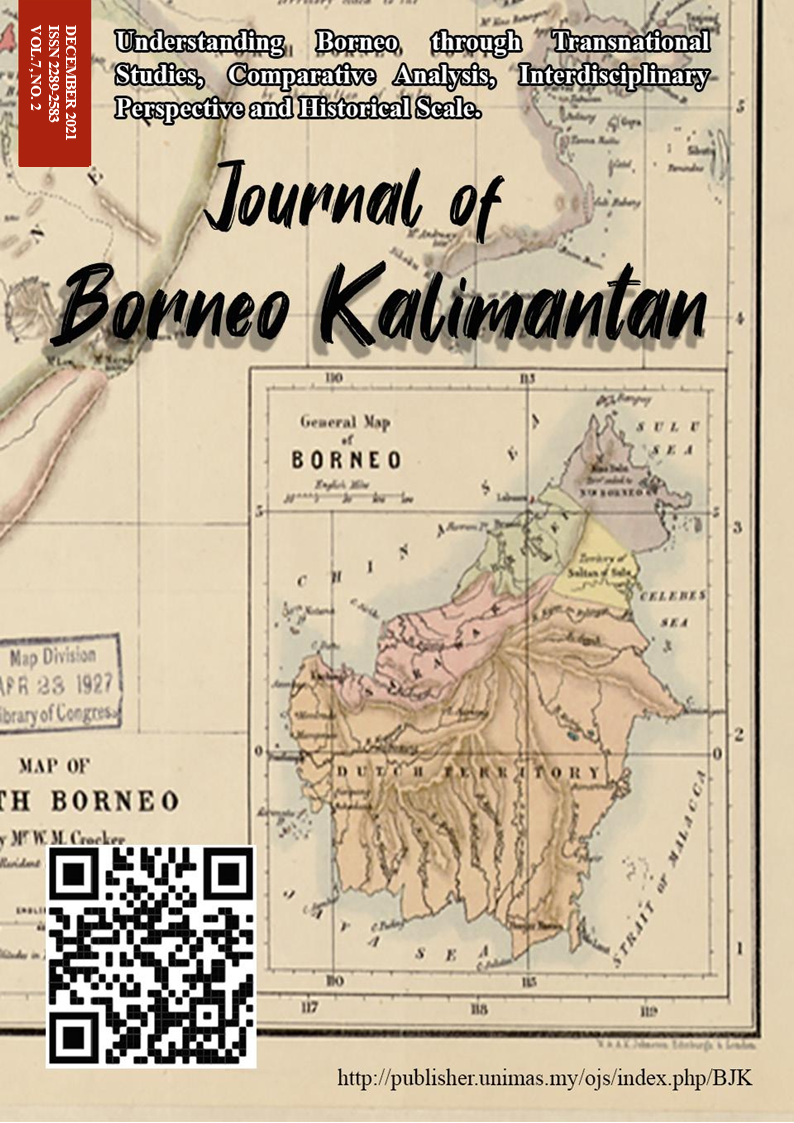Negeri Santubong (300ESS – 1674ES)
Keywords:
Negeri Santubong, Santubong, Sarawak, Kerajaan SantubongAbstract
Sanib Said is an old-hand in Sarawak history who is never satisfied with its state of historical knowledge. He is troubled by professional historians who continued to rely on the colonial sources emanated from the Brookes dynasty and sources affiliated with its loyalists and sympathisers. Equally worrying is the mentality of some local-born academics who are captivated by the European writings, blindly accepted their claims and uncritical of the indiscreet Eurocentrism embedded in those works. Seen as the ‘godfather’ among aspiring Sarawak Malay historians, his exhortation is listened with respect, his eclectic methods and dizzying claims are tolerated, his staunch dedication to Malay scholarship is admired. Negeri Santubong is Sanib’s pontification to the local scholars, the faithful and the unconverted.
References
Cubitt, G. (2013). History and memory. Manchester University Press.
Foucault, M. (1972). The archaeology of knowledge and the discourse on language. Pantheon Books.
Foucault, M. (1998). Aesthetics, method, and epistemology: Essential works of Foucault 1954-1984. Penguin UK.
Kratz, E.U. (1980). Silsilah Raja-Raja Sambas as a source of history. Archipel, 20(1), 255-267.
Reid, K. & Paisley, F. (eds.). (2017). Sources and methods in histories of colonialism: Approaching the imperial archive. Taylor & Francis.
Additional Files
Published
How to Cite
Issue
Section
License
-
Copyright Transfer Statement for Journal
1) In signing this statement, the author(s) grant UNIMAS Publisher an exclusive license to publish their original research papers. The author(s) also grant UNIMAS Publisher permission to reproduce, recreate, translate, extract or summarize, and to distribute and display in any forms, formats, and media. The author(s) can reuse their papers in their future printed work without first requiring permission from UNIMAS Publisher, provided that the author(s) acknowledge and reference publication in the Journal.
2) For open access articles, the author(s) agree that their articles published under UNIMAS Publisher are distributed under the terms of the CC-BY-NC-SA (Creative Commons Attribution-Non Commercial-Share Alike 4.0 International License) which permits unrestricted use, distribution, and reproduction in any medium, for non-commercial purposes, provided the original work of the author(s) is properly cited.
3) For subscription articles, the author(s) agree that UNIMAS Publisher holds copyright, or an exclusive license to publish. Readers or users may view, download, print, and copy the content, for academic purposes, subject to the following conditions of use: (a) any reuse of materials is subject to permission from UNIMAS Publisher; (b) archived materials may only be used for academic research; (c) archived materials may not be used for commercial purposes, which include but not limited to monetary compensation by means of sale, resale, license, transfer of copyright, loan, etc.; and (d) archived materials may not be re-published in any part, either in print or online.
4) The author(s) is/are responsible to ensure his or her or their submitted work is original and does not infringe any existing copyright, trademark, patent, statutory right, or propriety right of others. Corresponding author(s) has (have) obtained permission from all co-authors prior to submission to the journal. Upon submission of the manuscript, the author(s) agree that no similar work has been or will be submitted or published elsewhere in any language. If submitted manuscript includes materials from others, the authors have obtained the permission from the copyright owners.
5) In signing this statement, the author(s) declare(s) that the researches in which they have conducted are in compliance with the current laws of the respective country and UNIMAS Journal Publication Ethics Policy. Any experimentation or research involving human or the use of animal samples must obtain approval from Human or Animal Ethics Committee in their respective institutions. The author(s) agree and understand that UNIMAS Publisher is not responsible for any compensational claims or failure caused by the author(s) in fulfilling the above-mentioned requirements. The author(s) must accept the responsibility for releasing their materials upon request by Chief Editor or UNIMAS Publisher.
6) The author(s) should have participated sufficiently in the work and ensured the appropriateness of the content of the article. The author(s) should also agree that he or she has no commercial attachments (e.g. patent or license arrangement, equity interest, consultancies, etc.) that might pose any conflict of interest with the submitted manuscript. The author(s) also agree to make any relevant materials and data available upon request by the editor or UNIMAS Publisher.

